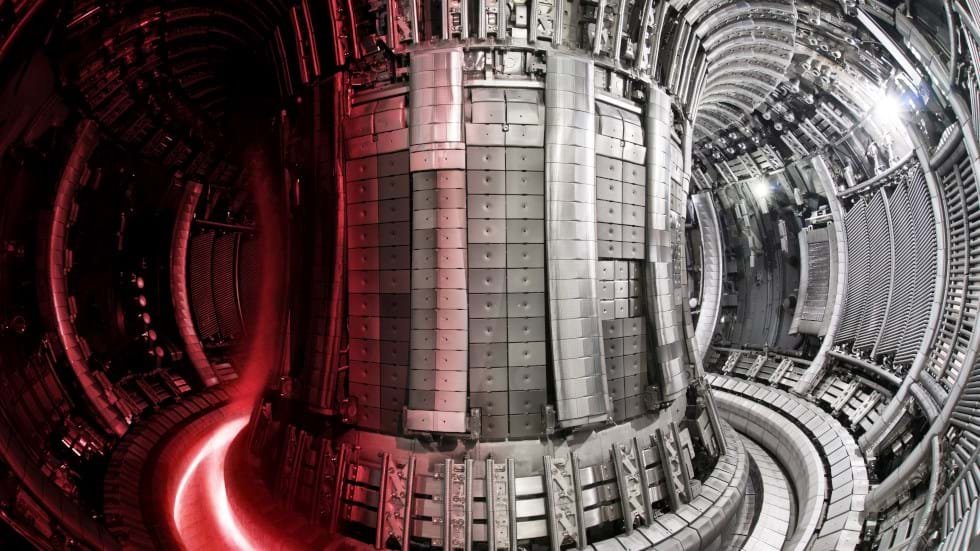UK government unveils £650m fusion programme as JET moves towards decommissioning

THE UK government has announced the £650m (US$789.9m) Fusion Futures Programme, part of its strategy to cement the nation as a technology leader. Measures under the programme include developing a new fuel cycle testing facility focused on commercialisation, creating more than 2,200 training positions, and funding to develop infrastructure for private fusion companies.
Fusion has the potential to generate a near unlimited supply of clean electricity in the long-term. The government believes development in the UK will help create jobs, grow the economy, and strengthen energy security. It adds that the UK is already a world leader in the technology and well placed to share its knowledge and expertise around the world.
The fusion support package will provide up to £200m for a fuel cell testing facility to develop technology in breeding fuel for fusion powerplants, offering the UK a chance to become a world leader and exporter in tritium intellectual property.
The Fusion Skills Programme will work with businesses and universities to expand fusion training programmes. Receiving up to £55m, it is expected to train more than 2,200 people over the next five years.
Infrastructure support includes up to £50m for growing and improving the Culham campus in Oxfordshire, home to the UK’s national fusion laboratory, the Culham Centre for Fusion Energy. The funding will go towards building new premises to create concentrations of fusion companies, helping drive inward investment.
The package will also deliver:
- up to £200m which will be used to support vital R&D to ensure that industry can develop and design components required for future fusion powerplants
- up to £35m of additional funding for the Fusion Industry Programme (FIP), a challenge fund supporting UK companies to develop new technologies
- up to £25m to enhance international collaborations on fusion R&D, to export UK expertise and make the best use of global knowledge to accelerate fusion energy
- up to £18m for a Technology Transfer Hub to strengthen the connections between leading UK research organisations and other programmes worldwide, with a focus on commercialising fusion research
- up to £11m to further support the STEP (Spherical Tokamak for Energy Production) programme and upskill UK industry to help deliver it
STEP is a UK Atomic Energy Agency (UKAEA) programme that will demonstrate the ability to generate net electricity from fusion, with a concept design for the powerplant expected by 2024.
Sir Ian Chapman, CEO of UKAEA, said: “Delivering fusion power will require ideas to solve science and engineering challenges, involvement of industry partners, development of thousands of skilled people, and strong international partnerships.
“Fusion Futures will invest in all of these aspects – a truly concerted programme that will support economic growth and high-quality jobs as well as advancing fusion as part of a future sustainable energy mix.”
Andrew Bowie, minister of nuclear and networks, announced the support package at the start of the 2023 IAEA Fusion Energy Conference. It takes the UK’s total investment to more than £1.4bn since 2021, with the government noting in its updated Fusion Strategy that it will have invested more than £700m from 2021/2022 to 2024/2025 to support UKAEA research and facilities, and last year invested £126m to boost UK fusion programmes.
Th support package forms part of the new strategy, which was published on 16 October. The strategy sets out how to build on the UK vision outlined in 2021, to expand R&D capabilities, deliver new cutting-edge facilities, and further support a diverse and vibrant fusion sector.
The UK government said the funding programme aligns with the core principle of the international collaboration in the updated Fusion Strategy. It adds that the UK is open to collaboration with the EU and other international partners, which will form a key part of the new programme and comes in the wake of the UK announcing it is rejoining the EU's flagship scientific research scheme, Horizon.
JET enters its next phase

Ahead of the Fusion Futures Programme announcement, the UK achieved another fusion milestone as the final deuterium-tritium experiments at the Joint European Torus (JET) came to an end.
Located at the Culham Centre for Fusion Energy, JET was designed to study fusion in conditions approaching those needed for a powerplant. It was the only experiment able to operate with the deuterium-tritium fuel mix that will be used for commercial fusion power. Its final, seven-week experimental campaign started on 31 August.
Joelle Mailloux, JET’s scientific programme leader, spoke of “a lot of good results” as the experiments were wrapping up.
The 40-year-old tokamak will now move into the next phase of its contribution to the development of fusion. The facility’s decommissioning and repurposing programme will help to define the full cycle of a fusion powerplant and is expected to continue providing ground-breaking research and innovation. It will also help to define the requirements for safe and ethical delivery of fusion decommissioning.
At this year’s IAEA Fusion Energy Conference, EUROfusion shared the results of their record-breaking campaign at the JET facility in 2021. EUROfusion is a collaboration of fusion research institutes from 26 EU countries, Switzerland, the UK and Ukraine.
Recommendations for fusion regulation
This fusion-focused week also saw the UK, Japan, and Canada jointly publish recommendations on how to develop a regulatory framework for fusion energy facilities. These were published alongside two case studies detailing evidence generated by contributing nations to support the recommendations.
The trio worked together through the Agile Nations intergovernmental regulatory network, as active members of the working group on fusion energy.
Recent Editions
Catch up on the latest news, views and jobs from The Chemical Engineer. Below are the four latest issues. View a wider selection of the archive from within the Magazine section of this site.




